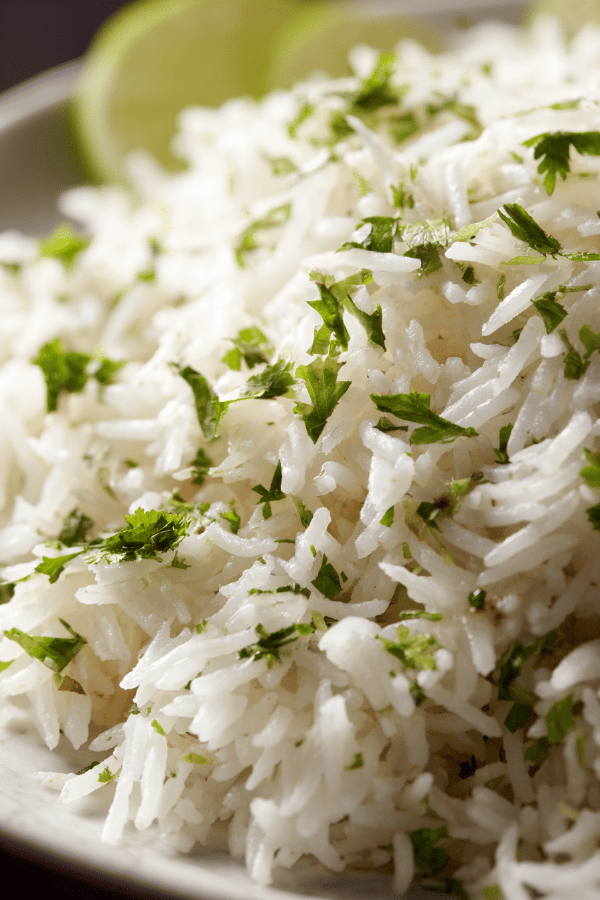Featured Recipe
Microwave Basmati Rice

By Kate
"
Quick basmati rice made in the microwave with vegetable broth and a hint of lime zest. Rinsed rice is essential for texture. Cooking time adjusted to avoid mush. Substitute chicken broth with vegetable broth or water if needed. Salt and pepper to taste throughout the process. Resting allows grains to firm up and absorb remaining liquid. Stirring mid-cook prevents clumps and uneven cooking. This method saves stove space and time without compromising rice integrity.
"
Prep:
5 min
Cook:
17 min
Total:
22 min
Serves:
3 servings
rice
microwave
vegetarian
Introduction
Microwave rice saves time but wrong technique? A mushy disaster. Rinsing rice before cooking cuts starch. Don’t skip that. Vegetable broth adds subtle earthiness without heaviness; no chicken broth? Use water and a pinch of bouillon powder or soy sauce for umami. Lime zest here? Adds brightness, cranes palate. Stir mid-cooking—prevents clumping, uneven heat distribution. Steam’s silent till it bubbles. Aroma shifts from sharp broth to toasted nutty as rice absorbs. Resting? Crucial. Grains firm up, separate clean. Fluff before plating to avoid dense spots. Basically tap into visual and tactile cues rather than exact timing. Kitchen noises and smell tell you when it’s done. Efficiency wins when multitasking kitchen chaos hits.
Ingredients
About the ingredients
Swapping chicken broth for vegetable broth works well for a lighter, vegetarian friendly option. If broth not available, use water plus a pinch of salt and possibly a small splash of soy or bouillon powder for depth. Rinsing rice reduces surface starch—prevents sticky clumps. Basmati can clump if not rinsed properly. Lime zest optional but brightens up flavor, easily replaced by lemon zest or a few sprigs of chopped fresh mint or parsley for a different twist. Salt quantity always adjustable based on broth seasoning and personal preference. Avoid adding oil upfront; it can coat grains and affect water absorption during microwaving.
Method
Technique Tips
Microwaving uncovered at high heat initially lets water evaporate gently and rice grains start absorbing liquid evenly. The bubbling sound softening to a gentle simmer is an audio cue rice is nearly tender. Stirring after half cook disrupts potential grain stacking or clumping achieved as rice rehydrates. Covering for the second phase traps steam creating a mini steamer effect completing cooking through gentle steam heat. Resting off the microwave is where rice finishes cooking internally without breaking down grain structure. Checking moisture visually and by texture is essential; you don’t want mush or dryness. Fluff with fork, not spoon, to keep grains separate. Adjust water quantity or resting time in future based on results to fine tune batch sizes or microwave power variations.
Chef's Notes
- 💡 Rinse rice until water is clear, no starch left. Avoid gummy texture. Essential. Bubble sound changes? Indicates tenderness.
- 💡 Midway stir crucial; prevents clumping. Rice becomes even. Second half covered for steaming effect. Heat traps; creates soft texture.
- 💡 Not enough liquid? Add a bit of water, microwave again. Adjust resting time if results vary. Don't be shy; test moisture.
- 💡 Use water with bouillon powder if broth's absent. Improvisation? Don't skip rinsing; clumps ruin meals. Texture is everything.
- 💡 Basil or mint can replace lime zest. Fresh herbs bring brightness but differently. Adjust salt based on broth strength.
Kitchen Wisdom
Why does rice turn mushy sometimes?
Too much starch or liquid. Ensure rinsing. Baking dish type and power vary results.
Can I substitute broth with water?
Sure. It'll alter flavor. Add a pinch of salt or umami for a boost. Flexible options.
What if rice isn't cooked?
Keep covered. Microwave more. Check every couple minutes. Grains need moisture to soften.
Can I store leftover rice?
Yes. Keep in fridge, airtight. Reheat gently to avoid drying. Add moisture; keeps grains nice.



